Best of India Tours
- Golden Triangle Tour- Best of India & Nepal
- Classical Rajasthan
India Cultural Tours
- Images of North India- Karnataka Heritage
- Rajasthan & Goa Tour
Discover India Tours
- Grand India Tour- North to South India
- Central to South India
Rajasthan Tours
- Classical Rajasthan Tour- Golden Triangle Tour
- Grand Mughal Tour
India Luxury Trains
- Palace on Wheels- The Golden Chariot
- India Deccan Odyssey
- The Indian Maharaja
- Royal Rajasthan on Wheels
Nepal Tours
- Glimpses of Nepal- Buddhist Pilgrimage
- Nepal River Rafting
- Destinations of Nepal
- Nepal General Info
India Wildlife Tours
- North India Wild Life- South India Wildlife
Tibet Tours
- Tibet Monastery Tours- Explore Tibet
- Destinations of Tibet
Spa & Yoga Tours
- Ananda in Himalayas- Yoga & Meditation
Adventure Tours
- Manali Safari Tour- Himalayan Trekking
- Horse Safari
Bhuj
Ahmedabad
![]() Bhavnagar
Bhavnagar
![]() Bhuj
Bhuj
![]() Daman
Daman
![]() Diu
Diu
![]() Gondal
Gondal
![]() Jamnagar
Jamnagar
![]() Sasan Gir
Sasan Gir
![]() Vadodara
Vadodara

Bhuj was founded in 1548 AD by Rao Khengarji I, starting a dynasty of jadeja rulers that ruled over Kachchh for 400 years. And so, the old walled city of Bhuj is the most important town in the area. The place lies at the heart of Kutch and is linked by many roads to the rest of the peninsula. The cenotaphs, erected at the royal cremation ground as memorials to the former rulers and the CHHATRI of Rao Lakhpatji who died in 1761, are fine specimen of Kachchhi architecture. Tourists should have a look at the interior, which has a stone tablet in memory of the ruler and 15 of his consorts.
The exterior walls bear sculptures of deities, hunting scenes, animals and couples in local Costumes. Also in Bhuj are the Aina Mahal or Glass Palace which was built in the 18th century, the Kutch Museum, which is Gujarat’s oldest, and the Bharatiya Sanskruti Darshan complex is renowned for its Ram Leela Frescoes and other timeless objects d'art. The rural bazaars of Bhuj sell its exquisite handicrafts, where icons of old customs and traditions are still alive in handicrafts, embroidered fabrics, leatherware, carved and lacquered furniture and metal ware, especially, old silver ware.
Sightseeing
Bhuj offers various sightseeing options which includes Aina Mahal which now serves as a museum, was built during the rule of Rao Lakhpatji. It now stands as a repository of the culture and history of Kachchh. Also visit Pragmal Palace which is opposite to Aina Mahal. Also visit Kachchh Museum, the oldest Museum in Gujarat established in 1877. Visit Ethnology Museum which is having unique collection of books and paintings. Visit Kakkadbhit Yaksha situated on a small hillock with 72 idols of Yaksha or Jakhs, who are believed to have come from Iran.
Excursions
Bhuj offers various excursions including Mata no Madh, which is famous for a temple dedicated to the deity of Jadejas. Also visit Kalo Dungar the low hills and hillocks lend the beauty and mystique to the rann, which has lured the adventurers through ages. Visit Banni and Khavda villages where people make ornaments, clothes and utensils. Tunda Vandha is a unique Rabari village in this village most of the male population is generally away from the village. Also visit Anjar which is famous for the shrine of Jesal and Toral, the folklore duo wherein the tough outlaw Jesal was chastised by Toral, a Kachchhi woman; is also a centre of fairs
Excursions for Bhuj
Aina Mahal
The Aina Mahal, which now serves as a museum, was built during the rule of Rao Lakhpatji. It now stands as a repository of the culture and history of Kachchh. As referred above, the building bears the influence of its architect Ramsang Malam who was exposed to European style during his long sojourn to Holland.
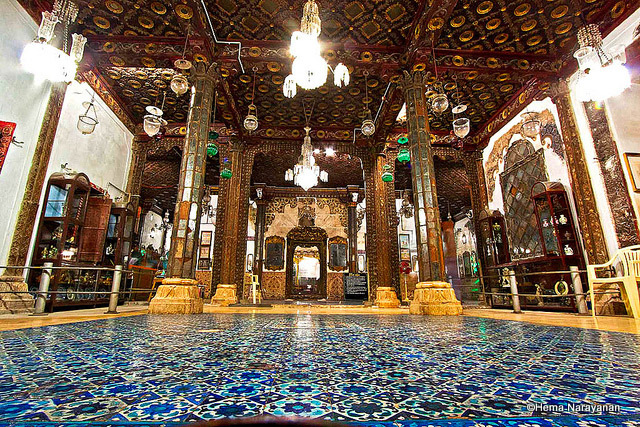
Pragmal Palace
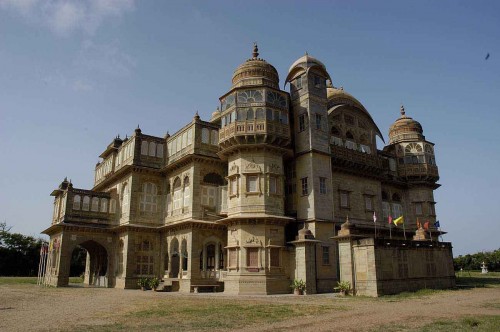
The palace opposite Aina Mahal, was built in 1797. Its tower and Corinthian pillars display strong British influence through its floral patterns.
Kachchh Museum
The oldest Museum in Gujarat was established in 1877. It is unique in having the largest collection of Kshatrapa inscriptions, for its gold and silver ornaments, textiles, armoury and other exhibits.

Ethnology Museum

This place is recommended for its rich collection of books and paintings of prominent Kachchhis. On the outskirts of the town is the Bhujia hill fort, which is still in good condition and has at its top the Temple of Bhujang Naag or serpent, the guardian deity of the city. To the west of the town is Hamirsagar Lake, visited by holidaymakers.
Kakkadbhit Yaksha
A few kilometers from Punareshwar, Kakkadbhit Yaksha is located along the highway. It is situated on a small hillock with 72 idols of Yaksha or Jakhs, who are believed to have come from Iran. In the opinion of the scholars they were the first batch of Parsi migrants who reached Jakhau due to a shipwreck. The memorial at Kakkadbhit is created in honour of their many acts of sacrifice and bravery on behalf of the local people, against the tyrannical rule of the then ruler Punarvo.
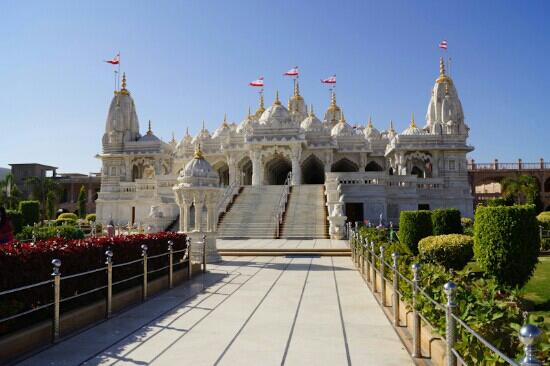
Banni / Khavda
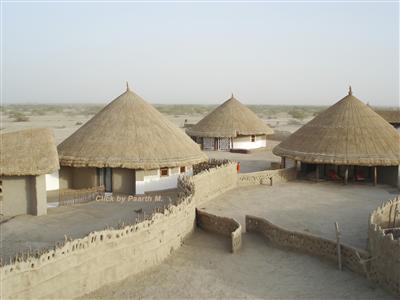
The last village on the border is a Desertland of infinite dimensions, and in its midst, quaint little villages suspended in Time. Here you will come across master craft people\' expositioning their traditional art, turning our master pieces everyday. Their ornaments, clothes, utensils, everything they use - will make you feel as if you have stepped into lifestyle museum leaving you spellbound.
Kalo Dungar (Dhinodhar)
The Black Hills of Kachchh are a common geographic feature of the district. The low hills and hillocks lend the beauty and mystique to the rann, which has lured the adventurers through ages. Kalo dungar is the tallest hillock in Kachchh with a shrine dedicated to Lord Dattatreya on the top. A fair is held here on the Janmashtami day every year. Visit to the top of the hill also affords magnificent view of the Rann.
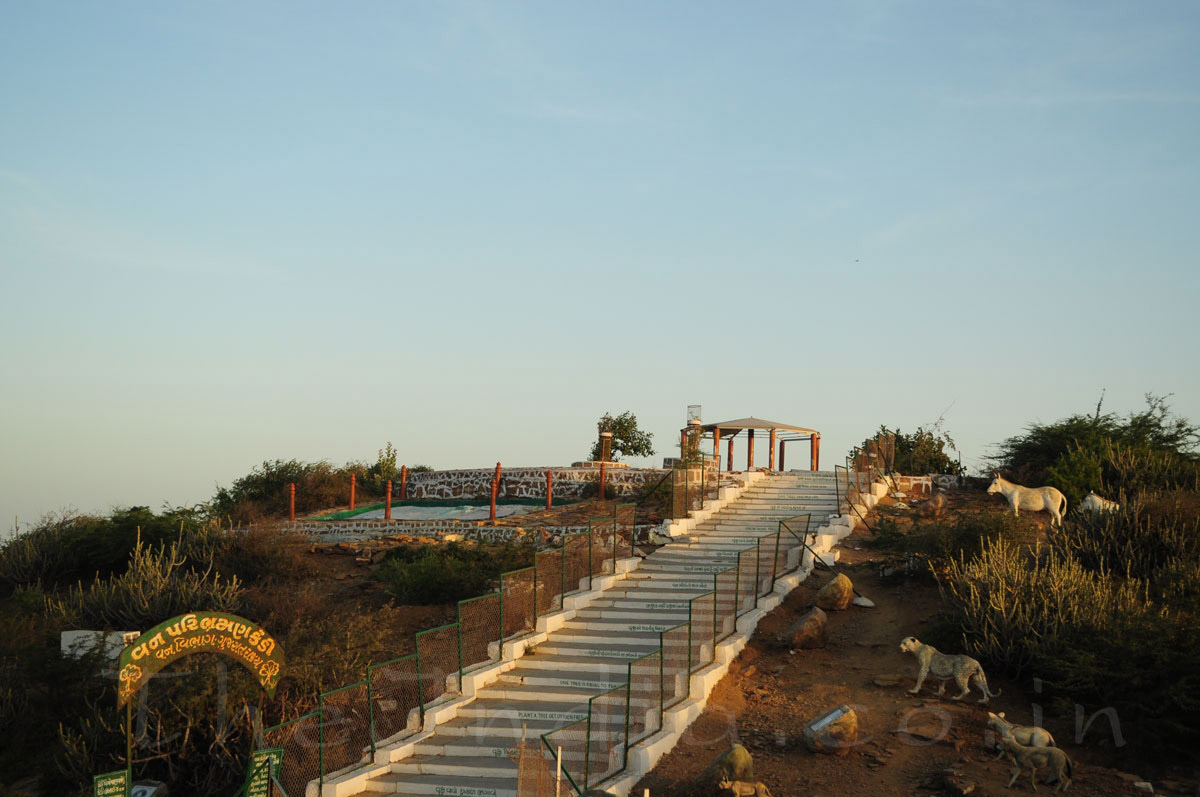
Mata no Madh
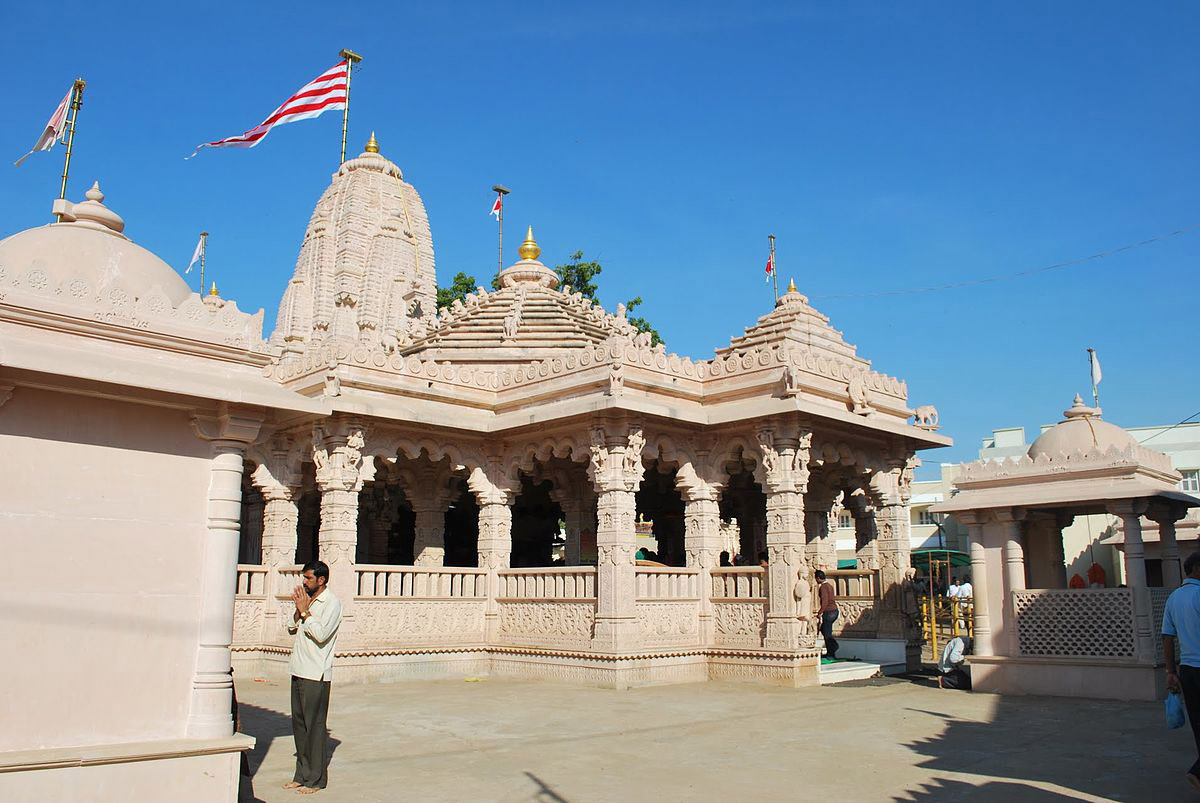
Further west of Kakkadbhit is a temple dedicated to the deity of Jadejas, the erstwhile rulers of Kutch. The original temple, which was demolished in the earthquake of 1819, was believed to be 1200 years old. Sunderji Saudagar built a new temple in its place with unique architectural expositions of dimensions and space. The main structure rises to the height of 52 feet. Navratri is also celebrated here.
Tunda Vandha
A unique Rabari village, it has about 125 exquisitely designed Kachchhi huts inhabited by about 400 Rabaris. Most of the male population is generally away from the village. The interiors of the huts present a pleasant spectacle of native art. A chat with the womenfolk will introduce visitors to this insulated and pristine culture, a world so different.
Fact File
 Area: 257 sq. km
Area: 257 sq. km
 Population:(1991) 936991
Population:(1991) 936991
 Altitude: 122 m above sea level
Altitude: 122 m above sea level
 Best Time to Visit: October-March
Best Time to Visit: October-March
 Languages: Hindi, English, and Gujarati
Languages: Hindi, English, and Gujarati
 STD Code: 02832
STD Code: 02832




